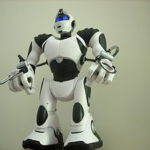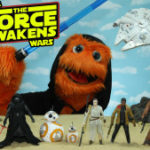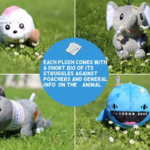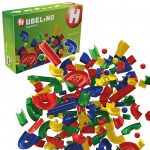As you search for the perfect toy to give to the little ones in your life this holiday season, you may be confused and even scared about some of the recent media attention on toy recalls and overseas manufacturing of toys, in general.
Some parents have even decided to look for other gift alternatives instead of buying toys. But is this really wise? Toys are intended not only to be a form of entertainment for children, but also a beneficial and vital part of their development. They provide a wonderful source of learning and entertainment for kids of all ages. Playing with creative toys enhances motor skills and provides a constructive way to release energy. By selecting quality toys from a company that researches their manufacturers thoroughly and regularly, you are giving a child an amazing way to foster creativity and stimulate intellectual development.
With this extreme attention on toy safety and product recalls in recent months, particularly on toys imported from China, it is crucial that consumers be informed and not misled. While it is true that over 80 percent of the toys sold in this country are imported from Chinese manufacturing plants, countries don’t make toys — companies do. It’s important to not view all toy companies as a singular entity.
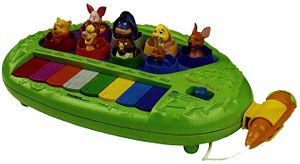
It is a fact that big name toy companies like Mattel have had some products recalled due to safety issues, but it is imperative to set the record straight. Most toy recalls are due to design issues – such as small parts that come off and present a choking hazard and not for the use of unsafe materials. These design-types of recall issues have nothing to do with Chinese manufacturers and are, in fact, not a manufacturing issue at all.
Small toy companies are concerned about recall fears being attributed to all companies, instead of the specific companies affected. There are thousands of toy companies in the U.S., yet the weight of attention to recalls among the large toy companies such as Mattel and Hasbro bears heavy on small toy companies. A small toy company in Madison, WI had this to say on their blog regarding the Mattel toy recall:
“The Mattel recall is bad for the entire toy industry… Mattel’s failure to effectively oversee their suppliers darkens the public perception of all Chinese manufacturers. It’s unfortunate this negative perception extends to companies that actually enforce rigorous quality standards, factories whose products consistently pass safety and lead tests…”
American consumers should be aware that the U.S. Consumer Product Safety Commission (CSPC) is also working very hard to ensure the safety of toys and other products imported from China. An International Consumer Product Safety Program known as the 2007 China Program Plan has been implemented. Responding to the problem of product recalls from China, the CPSC states, in part:
The Commission is exploring a variety of means to reduce the number of consumer products imported to the U.S. that pose a substantial product hazard, that violate mandatory product safety standards or that otherwise pose an unreasonable risk to American consumers. These efforts have included the creation of a new Office of International Programs; the development of the China Program; participating in product safety seminars; direct notification to manufacturers and to General Administration for Quality Supervision Inspection and Quarantine (AQSIQ) when a Chinese manufactured consumer product recall occurs; and stepped-up port and market surveillance to help keep defective or violative products out of the hands of consumers.
It is important to understand the impact of applicable U.S. standards, including ASTM-F963, which “relates to possible hazards that may not be recognized readily by the public and that may be encountered in the normal use for which a toy is intended or after reasonably foreseeable abuse. The standard covers requirements and contains test methods for toys intended for use by children under 14 years of age.” These standards are put in place as a voluntary way for the toy industry to police itself and protect the public.
A second way that the CPSC works with toy companies to provide safety information to consumers is with package labeling. Parents and others can help safeguard the children they are buying toys for by reading the labels and following the recommendations and warnings. Many issues in toy safety are directly related to consumer choices to purchase toys not intended for a particular age group. Most toys are given an age rating and a warning if there are specific reasons, such as small parts, if there are inappropriate for young children.
Recall information that is presented to the media and the public fails to properly identify problems related to age-appropriate products for children. There is a combined responsibility of toy companies, manufacturers, government, and parents/consumers to screen age appropriate toys based upon the development of a child. While it is easy to choose a learning game or an intellectually stimulating toy for a particularly mature child, it is important to remember that the behaviors and instincts of small children that can lead to some safety issues with some toys and that the guidelines are put in place with that consideration in mind.
There is a deep concern for children and safety issues in the toy industry, and it is a very real issue that is addressed by most toy companies. The standards that are set by the toy industry have not changed despite the recent media uproar. These standards are high and, when adhered to, are more than sufficient to keep toys safe.
At my toy company, History in Action Toys, I have taken great care in the design of our action figures to ensure that our toys are safe for the children who play with and love them. It is important to me that they provide a real opportunity for social interaction and educational benefits, but safety is my number one priority when designing and producing our toys. We currently market three action figure toys that each depict a leader from American history. We have had our toys independently tested by a third party to determine if they meet the safety standards set forth in CSMC’s ASTM F963.
THIS toy company does not ignore safety issues. I care deeply about children and would never have gone into this business or developed toys for them if this were not true. I worked hard to select a top-notch manufacturer in China, based upon their history, the clients they work with and their capabilities to produce a safe, quality product. I personally visited the manufacturing plant in China that I chose to produce my products, both to ensure quality control and to get to know the people I am working with. I consider this both a responsibility and a privilege and I have spent a great deal of time and money to guarantee that our products are and continue to be safe. Even though the manufacturer I chose was not the least expensive proposal that I received, when it came down to a choice between knowing I was producing a safe, quality toy and saving some money, safety and quality won hands down.
I have employed Bureau Veritas, an independent agency that works with companies worldwide to provide independent testing, inspection, auditing and certification to help ensure they meet and exceed all standards of safety. This independent testing agency determined that my toys met the ASTM-F963 standard. I am pleased with the positive results I have obtained regarding the safety of the toys I produce.
Don’t paint all toy companies with the same brush. While some companies have been hit hard with recalls, many more companies are in the same category as mine, having never had an unsafe toy on the market.
You can buy toys for your children this Christmas, made in the U.S. or in China with confidence and safety. Research the companies you are buying from to determine their safety history and their reputation for addressing and eliminating problems and concerns.
It is important to remember that most manufacturers, in the U.S. and in China, produce safe, quality toys that meet or exceed safety standards and that the number of recalled products is an extremely small percentage of the total amount of toys on the market today.


